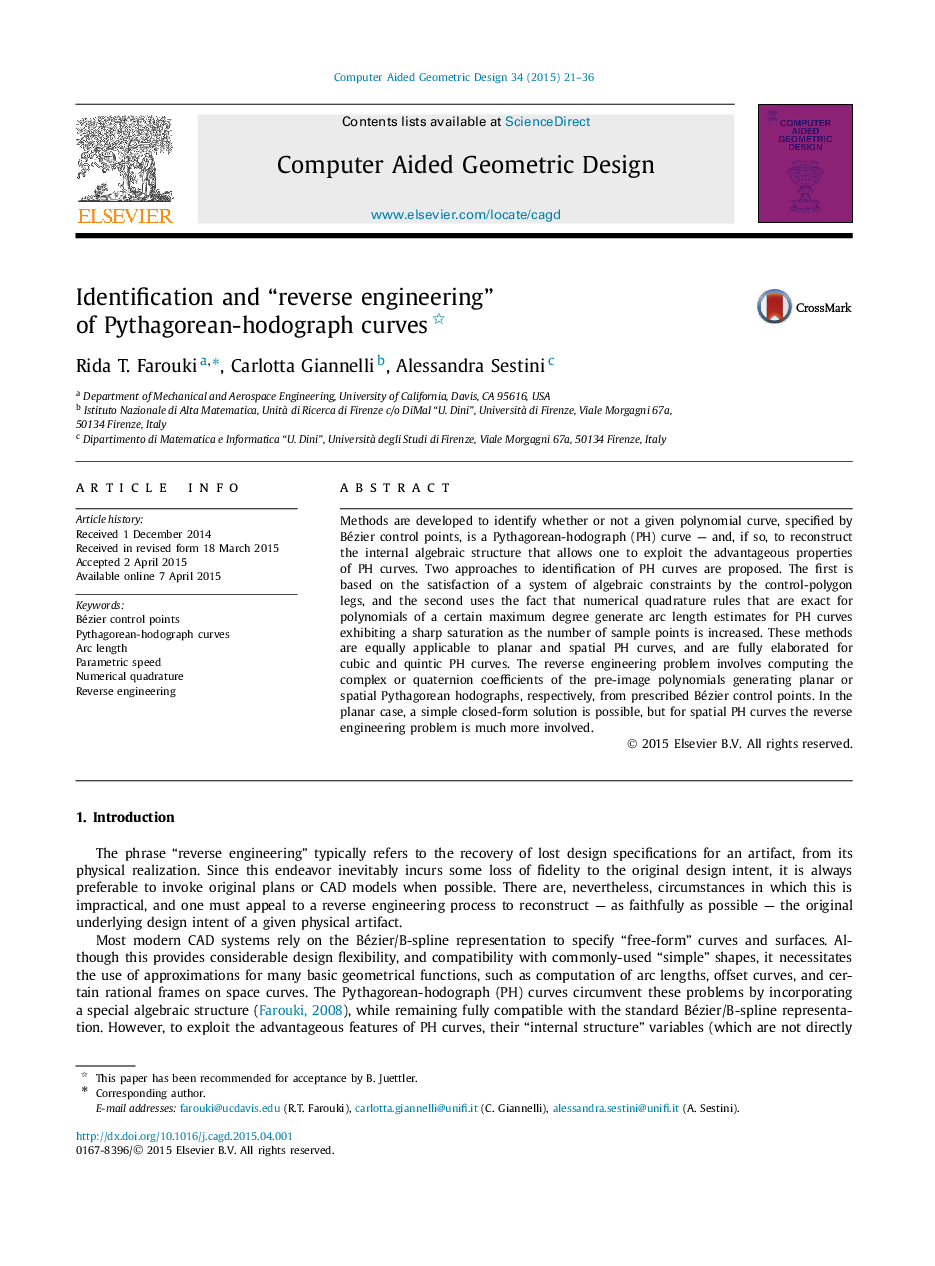| Article ID | Journal | Published Year | Pages | File Type |
|---|---|---|---|---|
| 441420 | Computer Aided Geometric Design | 2015 | 16 Pages |
•Methods to identify whether or not given control points define a Pythagorean-hodograph (PH) curve are formulated.•The methods are based on the satisfaction of control-point constraints or saturation of quadrature arc-length estimates, and apply equally to planar and spatial PH curves.•For identified PH curves, algorithms to reconstruct the complex or quaternion pre-image polynomials are developed.•The proposed methods allow existing CAD systems to fully exploit the advantageous properties of PH curves within the context of prevailing CAD geometry representations.
Methods are developed to identify whether or not a given polynomial curve, specified by Bézier control points, is a Pythagorean-hodograph (PH) curve — and, if so, to reconstruct the internal algebraic structure that allows one to exploit the advantageous properties of PH curves. Two approaches to identification of PH curves are proposed. The first is based on the satisfaction of a system of algebraic constraints by the control-polygon legs, and the second uses the fact that numerical quadrature rules that are exact for polynomials of a certain maximum degree generate arc length estimates for PH curves exhibiting a sharp saturation as the number of sample points is increased. These methods are equally applicable to planar and spatial PH curves, and are fully elaborated for cubic and quintic PH curves. The reverse engineering problem involves computing the complex or quaternion coefficients of the pre-image polynomials generating planar or spatial Pythagorean hodographs, respectively, from prescribed Bézier control points. In the planar case, a simple closed-form solution is possible, but for spatial PH curves the reverse engineering problem is much more involved.
